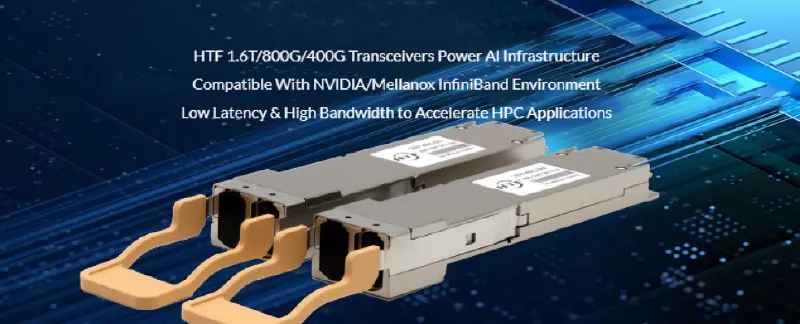High-speed optical transmission equipment is 400G transceivers, which allow data centers to send and receive data at speeds of 400 gigabits per second. These systems utilize PAM4 (quad-level pulse amplitude modulation) as one of the advanced modulation formats or technologies to double the existing data capacity on optical fiber without the need for additional cables. This design of 400GZR transceivers supports long-distance communication and includes digital signal processing (DSP) to improve signal integrity and reduce errors, so they can be used in high-density environments where bandwidth requirements are critical. These devices provide uninterrupted connections between high-performance computing systems and are therefore essential to meet the growing demand for cloud services as well as data analytics and other bandwidth-intensive applications.

The Role of QSFP-DD in 400G Transceivers
The Quad Small Form Factor Pluggable Double Density (QSFP-DD) is an important component of 400G transceivers because it provides a small and efficient interface for high-speed optical communications. Allowing four lanes of 100G data transmission increases port density, thereby supporting a maximum bandwidth of 400G in the same space as previous generations. The design of QSFP-DD also makes it backward compatible with existing QSFP and QSFP28 transceivers, so that data centers can upgrade their capabilities without changing much, if any, infrastructure. In addition, its robust electrical specifications and supported advanced modulation technologies are designed to meet the performance needs of modern applications, ensuring reliable and efficient delivery of information under high-demand conditions.
Key Features of Coherent Optical Transceivers
Today’s high-capacity networks rely on coherent optical transceivers with certain characteristics. Coherent optical transceivers use more complex modulation formats such as QPSK (quadrature phase shift keying) and 16-QAM (16-quadrature amplitude modulation) to greatly increase the data transmission capacity of existing fiber infrastructure. Another feature of coherent optical transceivers is that they are able to process signal attenuation caused by chromatic dispersion and polarization mode dispersion through digital signal processing (DSP), thereby improving signal quality and coverage. In addition, coherent optical transceivers are designed for long-distance transmission and can transmit over 100 kilometers without regeneration while processing multiple wavelengths simultaneously. This enables efficient wavelength division multiplexing (WDM), thereby maximizing spectral efficiency. All these features enable data centers and telecom operators to cope with the growing demand for bandwidth while minimizing latency and operating expenses.

